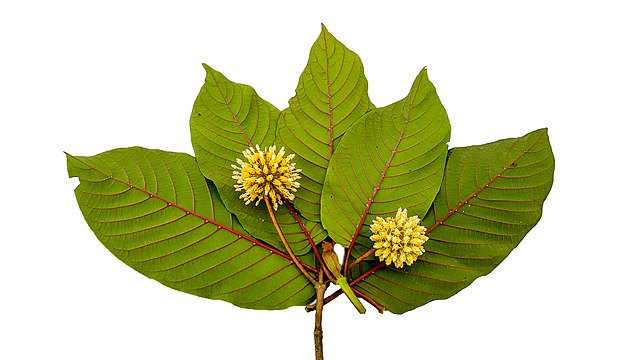
Kratom: A Potential Ally in Overdose Prevention
The struggle with substance use disorders (SUDs) continues to plague many individuals, bringing with it a host of physical, emotional, and societal challenges. In the search for effective harm-reduction strategies, a unique herbal substance known as kratom has emerged, sparking both hope and controversy. Could kratom be a valuable tool in preventing overdoses and supporting those with SUDs?
What is Kratom?
Kratom, derived from the leaves of the Mitragyna speciosa tree, is native to Southeast Asia. Traditionally, the leaves were chewed or brewed into a tea to relieve pain, increase energy, and combat fatigue. Today, kratom is gaining popularity in the U.S. as an alternative remedy for managing opioid withdrawal, reducing cravings, and even addressing alcohol and stimulant use disorders.
The Double-Edged Sword of Kratom
Kratom’s appeal lies in its dual nature. At low doses, it acts as a mild stimulant, providing energy and focus. At higher doses, it mimics the effects of opioids, offering pain relief and sedation. This versatility has made it a potential harm reduction agent for people struggling with various substance use disorders.
However, the growing use of kratom has raised concerns among healthcare professionals and regulatory bodies. The U.S. Food and Drug Administration (FDA) has yet to approve kratom for medical use, citing insufficient evidence and potential health risks. Despite this, many users report positive experiences with kratom, using it to alleviate withdrawal symptoms and reduce their reliance on more harmful substances.
Kratom and Opioid Use Disorder
Opioid use disorder (OUD) is a significant public health crisis, with more than 80,000 overdose deaths in the U.S. in 2021 alone. While medications like methadone, buprenorphine, and naltrexone are effective, they are not always accessible or desirable for all patients.
Kratom’s potential role in OUD management comes from its ability to bind to opioid receptors in the brain, similar to traditional opioids but with a lower risk of respiratory depression—a common cause of opioid overdose. Early studies suggest that kratom can reduce opioid cravings and alleviate withdrawal symptoms, making it a possible bridge for individuals seeking to decrease their opioid use.
Kratom and Alcohol Use Disorder
Alcohol use disorder (AUD) is another area where kratom shows promise. Animal studies have demonstrated that kratom can reduce alcohol intake and withdrawal symptoms. This is significant because current treatments for AUD are limited and often only moderately effective.
Survey data indicates that some individuals use kratom to help manage their alcohol consumption, reporting decreased cravings and withdrawal symptoms. While these findings are promising, more research is needed to confirm kratom’s efficacy and safety in treating AUD.
Kratom and Stimulant Use Disorder
Stimulant use, including cocaine and methamphetamine, poses severe health risks, and currently, there are no approved medications to treat stimulant use disorder. Kratom’s potential benefits extend here as well. Preclinical studies suggest that kratom can reduce cravings and alleviate some of the negative effects associated with stimulant withdrawal.
The Risks and Regulatory Challenges
Despite its potential benefits, kratom is not without risks. Adverse effects can include nausea, confusion, agitation, and, in severe cases, seizures and liver toxicity. Moreover, kratom can lead to dependence and withdrawal symptoms, particularly with prolonged use.
The lack of regulatory oversight also poses significant challenges. Kratom products vary widely in their composition and potency, leading to inconsistencies and potential safety issues. Contaminants, such as heavy metals and harmful microbes, have been found in some kratom products, underscoring the need for standardized regulations and quality control.
Moving Forward with Kratom
The current landscape of kratom use in the U.S. highlights both its promise and its pitfalls. There is a clear need for more rigorous research to determine the optimal dosing, safety, and efficacy of kratom as a harm-reduction tool. This includes controlled clinical trials and improved regulatory standards to ensure product safety and consistency.
Why Should You Care?
The rising use of kratom speaks to the urgent need for more effective harm-reduction strategies for individuals with substance use disorders. While traditional treatments are vital, they are not accessible or suitable for everyone. Kratom offers a potential alternative for those seeking to manage their substance use and reduce the risk of overdose.
What are you experiences?
- Have you or someone you know used kratom as a tool for managing substance use? What was your experience?
- What are your thoughts on the potential benefits and risks of kratom as a harm-reduction agent for substance use disorders?
Stay Ahead in Public Health – Get Your Weekly Update!
Want to be a leader in health? “This Week in Public Health” gives you key updates every week. Our newsletter shares news on the latest breakthroughs and projects, helping you stay informed. Subscribe for free and help shape the future of public health today!
About the Author
Dr. Jonathan P. Scaccia, PhD, is a clinical-community psychologist with expertise in public health science and practice. He has led evaluation and research initiatives focusing on health equity, vaccine distribution, and organizational readiness. Dr. Scaccia has contributed to federal suicide prevention programs and vaccine equity strategies. Recognized with awards for his impactful work, he is a leading voice in advancing public health practices.



